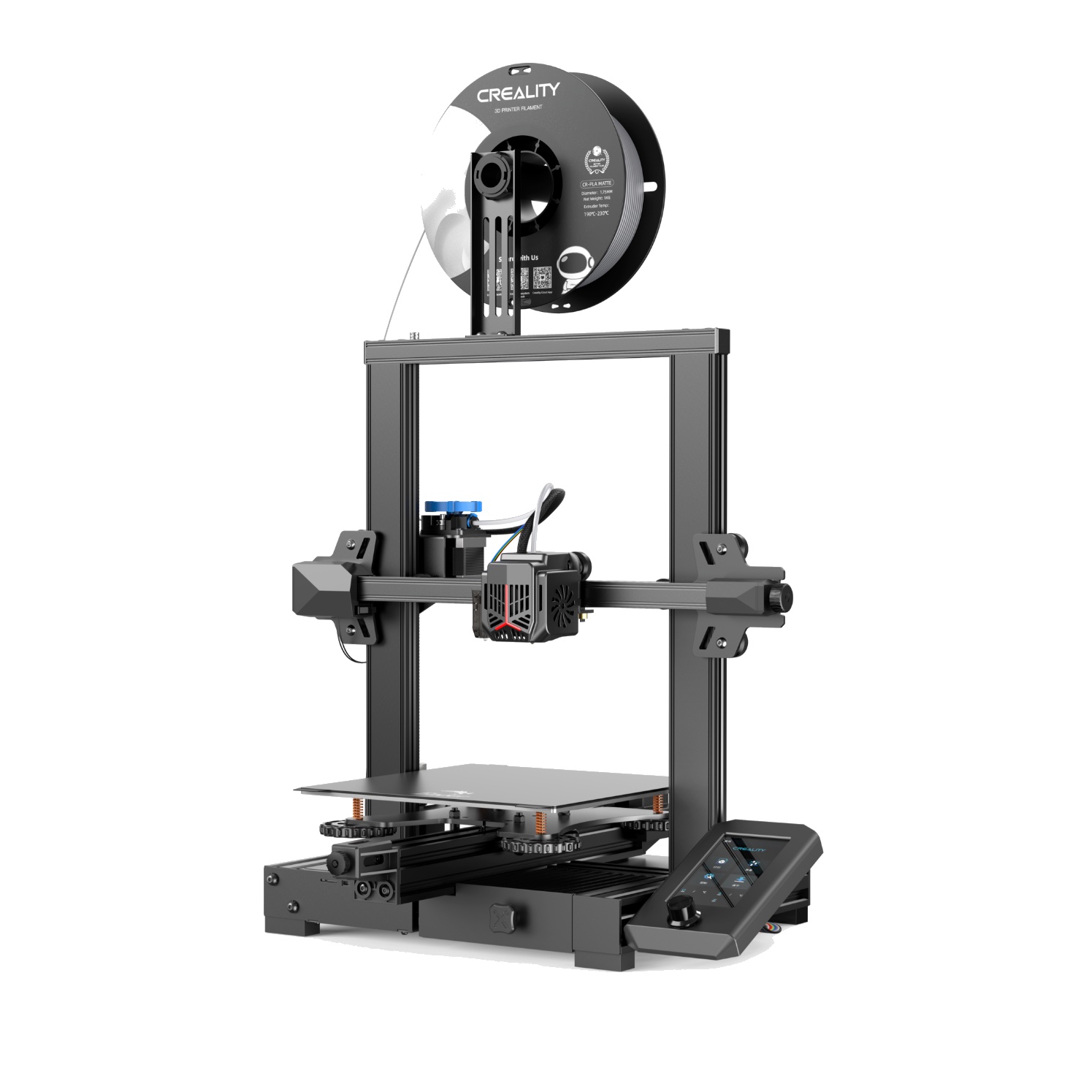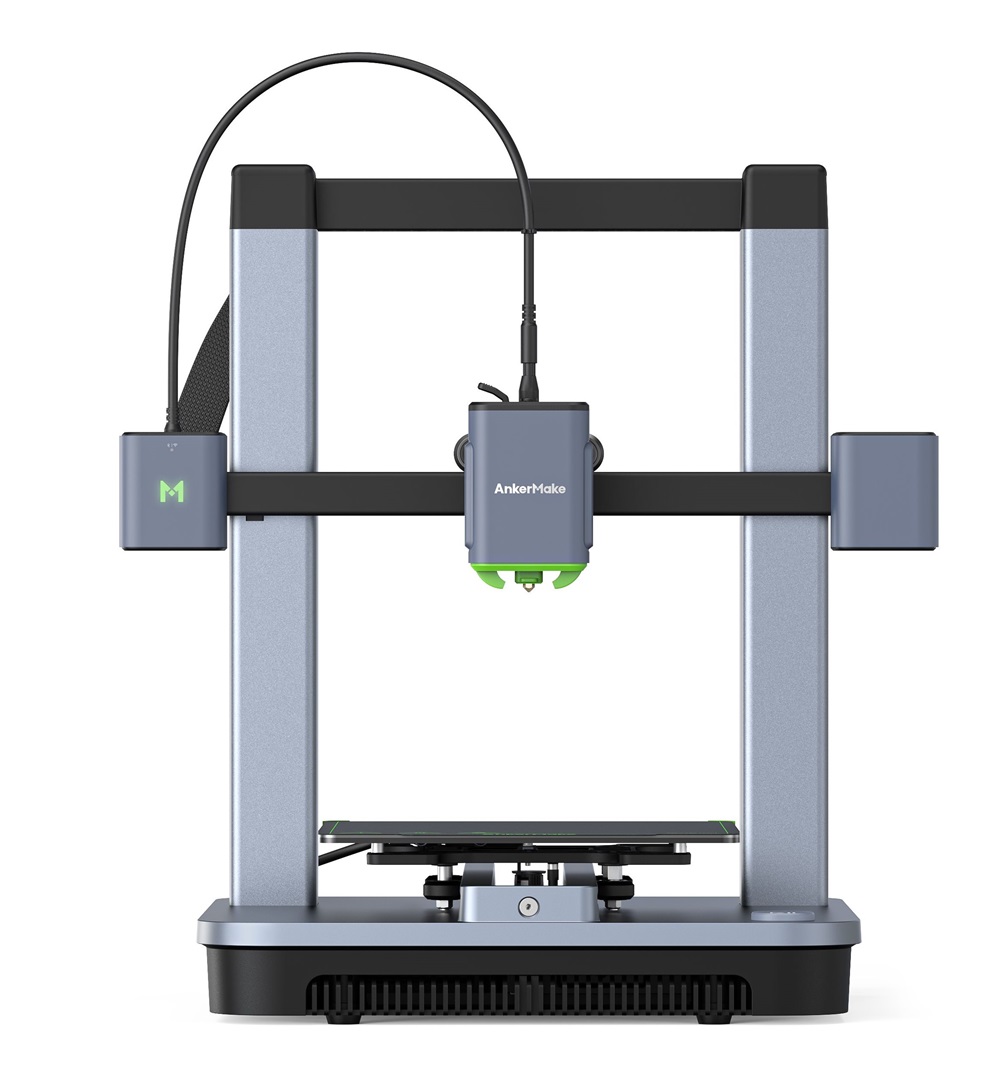Compare Ender 3 V2 Neo vs M5C
Comparison between the best 3D printers
Choose the best 3D printer at the best price. The cheapest 3D printers are here.
Buy a 3D printer here with 3D Fila.
 |
 |
|
| Model | Ender 3 V2 Neo[BUY Ender 3 V2 Neo] |
M5C[BUY M5C] |
| Printing Material | Filament | Filament |
| Buy Filament for Creality 3D Ender 3 V2 Neo | Buy Filament forAnkerMake M5C | |
| Estimated price | $310,00 | $399,00 |
| Manufacturer | Creality 3D | AnkerMake |
| Release Year | 2022 | 2023 |
| Print Volume [mm] | 220x220x250 | 220x220x250 |
| Printer Size [mm] | 438x424x472 | 466x374x480 |
| Weight [kg] | 9,8 | 9,6 |
| Power Loss Recovery | YES | YES |
| Enclosed printer | NO | NO |
| Bed Leveling | Automatic | Automatic |
| Filament End Sensor | YES | YES |
| Bed type | Heated | Heated |
| Power supply system | Bowden | Direct Drive |
| Standard nozzle | 0,4 | 0,4 |
| Maximum Nozzle Temperature [°C] | 260 | 300 |
| Maximum Bed Temperature [°C] | 100 | 100 |
| Maximum printing speed [mm/s] | 80 | 500 |
| Filament holder | YES | YES |
| Camera for supervision | NO | NO |
| Recommended filaments | PLA, PETG | PLA, PETG, TPU, ABS, PA, PLA-CF, PETG-CF, PA-CF |
| Recommended slicers | Cura, Simplify, Slic3r, IdeaMaker | AnkerMake Studio (macOS, Windows), Simplify3D, Ultimaker Cura, PrusaSlicer |
| Maximum Resolution [mm] | 0,1 | 0,1 |
| Processor | 4.2.2 mainboard | |
| Display | Display touchscreen 4,3'' | |
| Power Supply | 350 W | |
| Connectivity | SD / USB | Wi-Fi, USB-C, Bluetooth |
| Operating systems | Windows, Mac, Linux | Windows, Linux e Macbook |
| Date of registration in the system | 2022-12-09 | 2024-09-11 |
| Release date | 2022 | 2023 |
| Extra features | The Ender 3 V2 Neo printer stands out for its automatic bed leveling with the CR Touch system, ensuring high-quality initial layers. It features an all-metal Bowden extruder for increased durability and improved filament handling. Its flexible, PC-coated magnetic build plate makes it easy to remove prints and is durable and easy to clean. It also includes a new user interface with model preview and an updated gantry design. The Ender 3 V2 Neo maintains the same build volume and temperatures as the previous version, supporting popular filaments such as PLA and ABS. It features a quiet 32-bit mainboard and additional features such as a filament sensor, print recovery, simple 3-step assembly, an integrated toolbox, and belt tensioners. | The AnkerMake M5 printer stands out for its impressive print speed, reaching up to 500mm/s. It features AI print monitoring, an integrated camera for creating timelapses, auto-leveling bed with pressure sensor, direct extruder, flexible PEI-coated build plate, and Wi-Fi and USB-C connectivity. Assembly is quick and easy, and the printer is designed to deliver high print quality and ease of use. |
| Support for multiple colors and materials (AMS and CFS) | NO | NO |
Notes * |
||
| Cost-benefit | 6 / 10 | 7 / 10 |
| Hardware | 2.4 / 10 | 2.8 / 10 |
| Tela | . | . |
| Print volume | 3 / 10 | 3 / 10 |
| Performance | 0 / 10 | 4 / 10 |
| [BUY Ender 3 V2 Neo] | [BUY M5C] |
Conclusion |
| In comparing the Ender 3 V2 Neo and the AnkerMake M5C, both printers offer solid features, but they cater to different user priorities and budgets. The **Ender 3 V2 Neo**, released in 2022, is a cost-effective choice with reliable performance, automatic bed leveling, and a heated build plate. It is designed for users seeking greater simplicity and functionality at a lower price point. The printer supports popular filaments and has a print recovery feature, making it a good option for those new to 3D printing or looking for a dependable machine for standard prints. On the other hand, the **AnkerMake M5C** is a more advanced model, launched in 2023. It boasts exceptional maximum printing speeds, advanced connectivity options like Wi-Fi and Bluetooth, and a robust direct-drive extrusion system. These features make it appealing for users who prioritize speed, versatility with various filaments, and a range of more advanced capabilities. However, these enhancements come at a higher price. In summary, if budget is your primary concern and you're looking for a reliable entry-level printer, the Ender 3 V2 Neo is the better option. Alternatively, for users willing to invest more for superior features and speed for more demanding projects, the AnkerMake M5C is worth considering. Ultimately, the choice depends on the specific needs and priorities of the user regarding performance versus price. |

